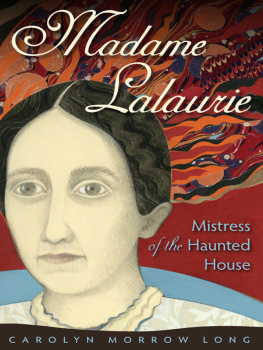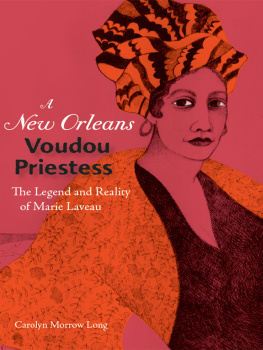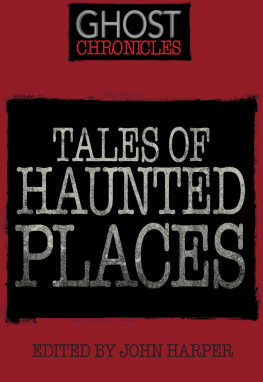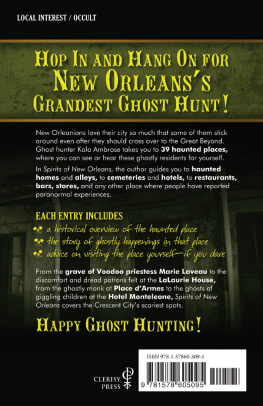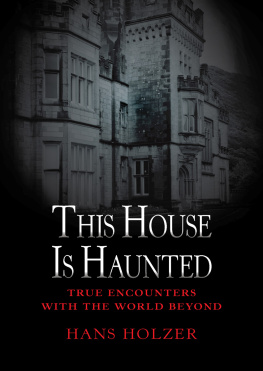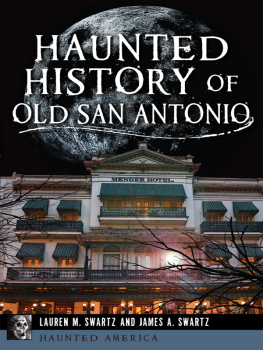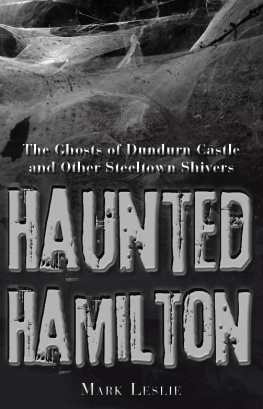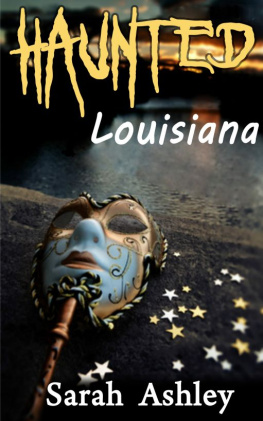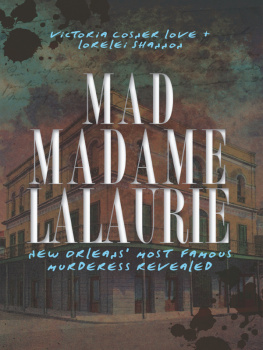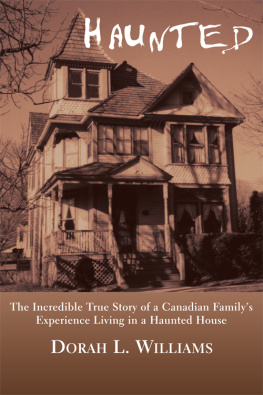ACKNOWLEDGMENTS
I began my love affair with New Orleans in 1978, visiting first as a tourist, then as a passionate aficionado of the city's unique culturethe music, food, architecture, celebrations, Afro-Catholic spirituality, and especially the people. After 1995 I went there with a more focused purpose, completing my two previous books, Spiritual Merchants and A New Orleans Voudou Priestess: The Legend and Reality of Marie Laveau. In the beautiful spring of 2005, I commenced researching Madame Delphine Macarty Lalaurie; that fall came Hurricane Katrina and the flooding that nearly destroyed the city. Thanks to the wise planning of the custodians of New Orleans' remarkable archival collections, few of these resources were lost, although many institutions remained closed for months.
I resumed my work the following year and since then have made frequent research trips to New Orleans. On any day that the archives and libraries were open, I was there, poring over original handwritten eighteenth- and nineteenth-century French and Spanish documents or squinting at a microfilm reader. Evenings and Sundays I was out with my friends at restaurants, music clubs, and second-line parades. These intervals of intense work and play in my favorite place in the world have been extraordinarily happy and fulfilling.
So many people facilitated the completion of this book. First, I thank the staff at University Press of Florida, particularly director Meredith Morris-Babb and former editor in chief John Byram for continuing to encourage and believe in me. Nevil Parker, my project editor, facilitated the publication process, and copy editor Jonathan Lawrence corrected my mistakes. Two excellent scholars read the draft of the manuscript and saved me from many errors through their generous willingness to answer queries and discuss points of interpretation. I am tremendously grateful to Elizabeth Shown Mills, historian, genealogist, and expert on Louisiana's free people of color, and to Dr. Nathalie Dessens, professor of American History at the Universit Toulouse-Le Mirail and expert on the Jean Boze-Henri de Ste-Gme correspondence now housed at the Historic New Orleans Collection.
As always, I thank the archivists and librarians of New Orleans who helped me while I was in residence and answered my desperate long-distance requests for photocopies of documents and scans of visual images when I was back home in the District of Columbia. At the Archives of the Archdiocese of New Orleans, archivists Charles Nolan and Emilie Leumas allowed me access to the sacramental registers, and Janet Adams and Jack Belsom located the volumes that I needed. In addition, Jack picked me up on his way to work, saving me the long bus trip to the archives. Alana Mendoza of the New Orleans Archdiocesan Cemeteries office found the ownership and burial record for the tomb alleged to be that of Madame Lalaurie. The staff at the Notarial Archives Research Center was also wonderful. I thank archivists Ann Wakefield and Yvonne Loiseau, and assistants Isabel Altamirano, Kara Brockman, Juliet Pazera, and Sybil Thomas. It was a great pleasure to work with Irene Wainwright and Gregory Osborn of the Louisiana Division, New Orleans Public Library. At The Historic New Orleans Collection Williams Research Center, Siva Blake, Mary Louise Eichhorn, Daniel Hammer, and Sally Strassi were very patient with my requests for documents, maps, and pictorial images. Kathryn Page, archivist of the Louisiana State Museum Historical Center, allowed me to photocopy many pages from the Pontalba family letters. Florence Jumonville, Chair of the Louisiana and Special Collections Department, and James Clifford, Library Associate, at the Earl K. Long Library, University of New Orleans, made photocopies of Louisiana Supreme Court documents and scans of materials from the Marcus Christian Collection. Leon Miller, Special Collections Manuscripts Librarian at the Howard-Tilton Memorial Library, Tulane University, allowed me access to the George Washington Cable Papers and the DeBuys Family Papers.
Dr. Gilbert Din, authority on Spanish colonial Louisiana, helped me resolve questions about Madame Lalaurie's first marriage to a Spanish government official. Dr. Judith Schafer, expert on nineteenth-century Louisiana civil law, patiently answered my many questions. Dr. Robert Paquette, researcher of the 1811 Louisiana slave uprising, helped me sort out the historical facts. Historian Mary Gehman led me to several important sources. Meredith Shedd-Driskel, curator of rare books at the Law Library, Library of Congress, photocopied many pages of the 1808 Digest of the Civil Laws for the Territory of Orleans and the 1825 Civil Code for the State of Louisiana. Judith Chelnick of the Division of Medical Sciences, National Museum of American History, Smithsonian Institution, helped me find information on early nineteenth-century orthopedic practices. Christopher Gordon, archivist at the Missouri History Museum, provided photocopies of the Lalaurie family letters from the DeLassusSt. Vrain Collection.
I was extremely fortunate to secure the cooperation of several Macarty descendants. John Ellis and Mac McCall are directly descended from Delphine Macarty Lalaurie's eldest daughter through the Forstall-Rathbone-DeBuys line, and I appreciate that neither of them objected to my writing about their notorious ancestor. John was especially helpful in allowing me to make electronic scans of family photographs. Sonja MacCarthy, descended from Delphine's uncle Eugne Macarty and the free woman of color Helise Croy, generously shared her research on the Macartys of mixed race. I had informative conversations with Patrick Ahern, the building contractor who helped to restore the Lalaurie mansion in the 1980s, and with Tommy Williams, manager of the property for its former owner, the actor Nicolas Cage. In France, Gisele Bourdier found and copied several useful documents. I thank the psychics Cari Roy, Karen Jeffries, Juliet Pazera, and Mary Millan for accompanying me to the Lalaurie mansion and sharing their impressions.
I was honored to receive a Publication Initiative Grant from the Louisiana Endowment for the Humanities. The grant helped cover expenses for travel to New Orleans, photocopying archival materials, acquiring illustrations, hiring translators for the most difficult of the handwritten Spanish and French documents, and engaging a research assistant in Paris.
Nilda Aponte tackled the nearly indecipherable eighteenth-century Spanish colonial records, with handwriting replete with flourishes, curlicues, archaic legal terms, and unfamiliar abbreviations. Gail Moreau-Desharnais worked with the equally challenging nineteenth-century French letters from the DeLassusSt. Vrain Collection and the Ste-Gme Family Papers. Jrme Malhache, a professional researcher and genealogist, scoured the archives of Paris and Dr. Louis Lalaurie's hometown of Villeneuve-sur-Lot for evidence of Madame Lalaurie's life after she fled New Orleans. I could not have written this book without the help of Nilda, Gail, and Jrme.
Finally, I thank my beloved husband, Douglas Wonderlic, who has been my best friend since 1981, accompanied me on research trips, read every draft, and put up with my fanatical work schedule for the past fifteen years.
Carolyn Morrow Long studied studio art and art history at Auburn University, the University of Missouri, and the University of Mississippi. During her career she has been a painter, a collage artist, a potter, an art teacher, a photographer, and a writer. She was employed for eighteen years as a conservator of paper artifacts and photographs at the Smithsonian Institution's National Museum of American History and retired in 2001. Long is the author of Spiritual Merchants: Religion, Magic, and Commerce and A New Orleans Voudou Priestess: The Legend and Reality of Marie Laveau.
Next page
